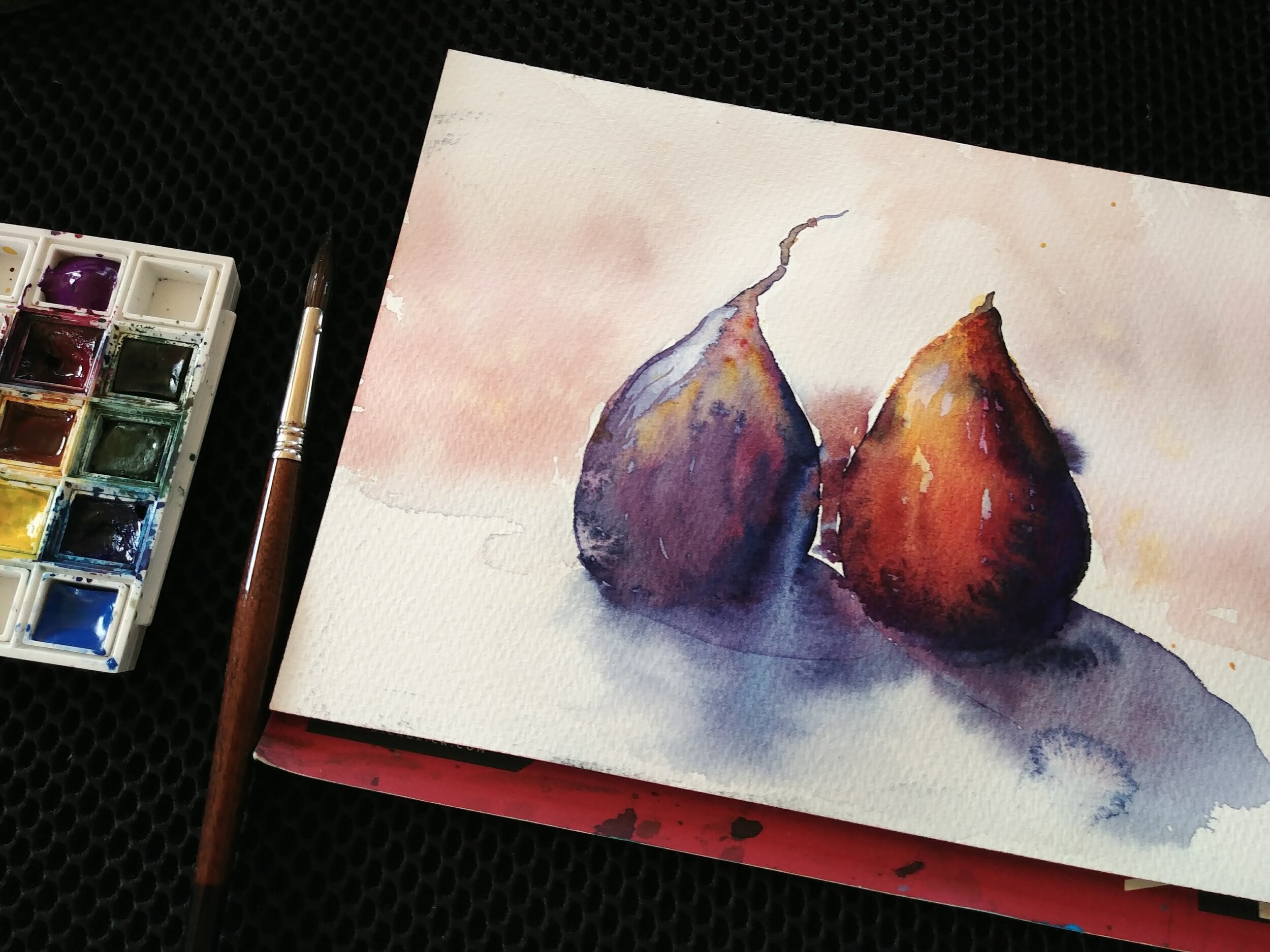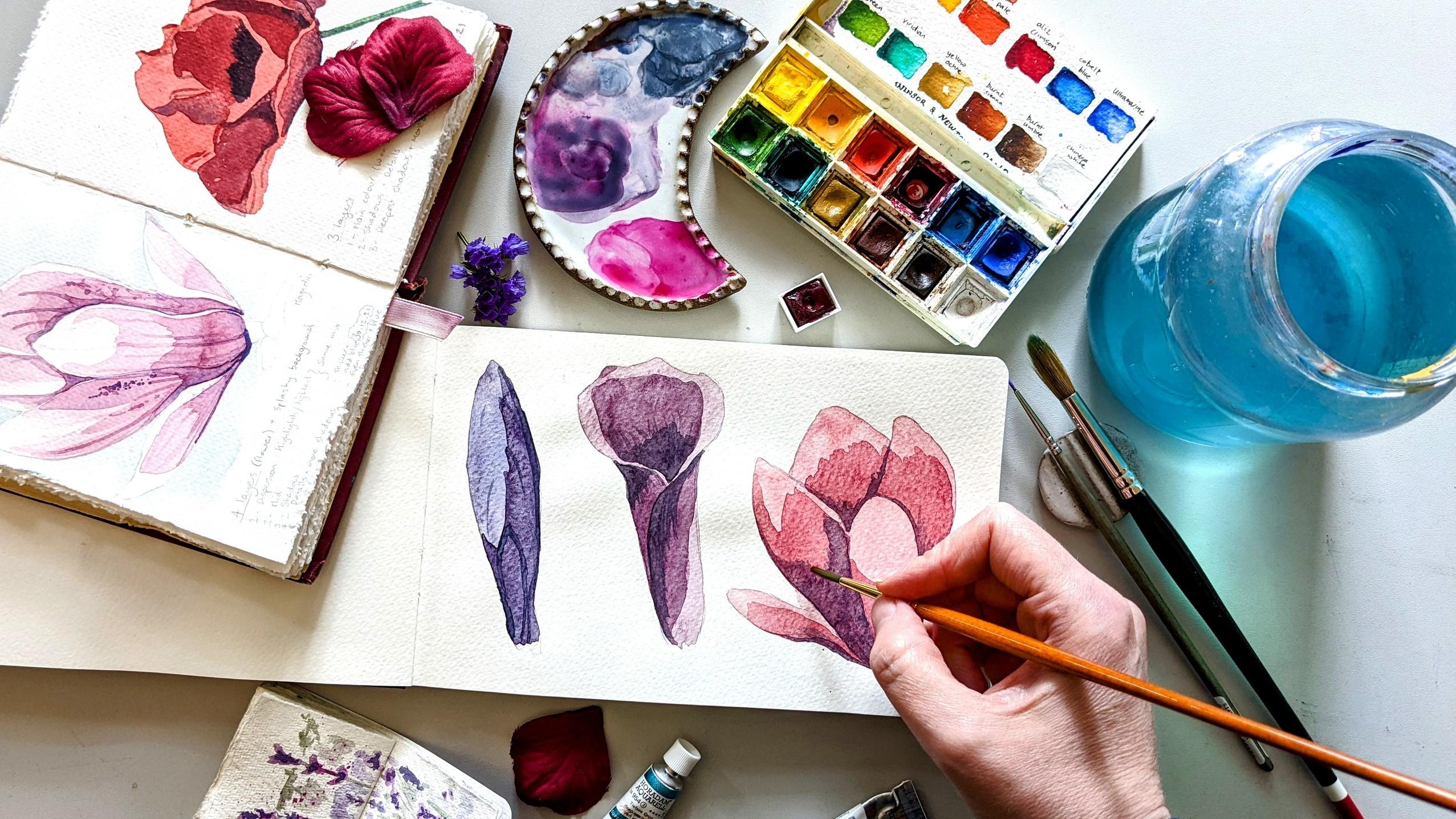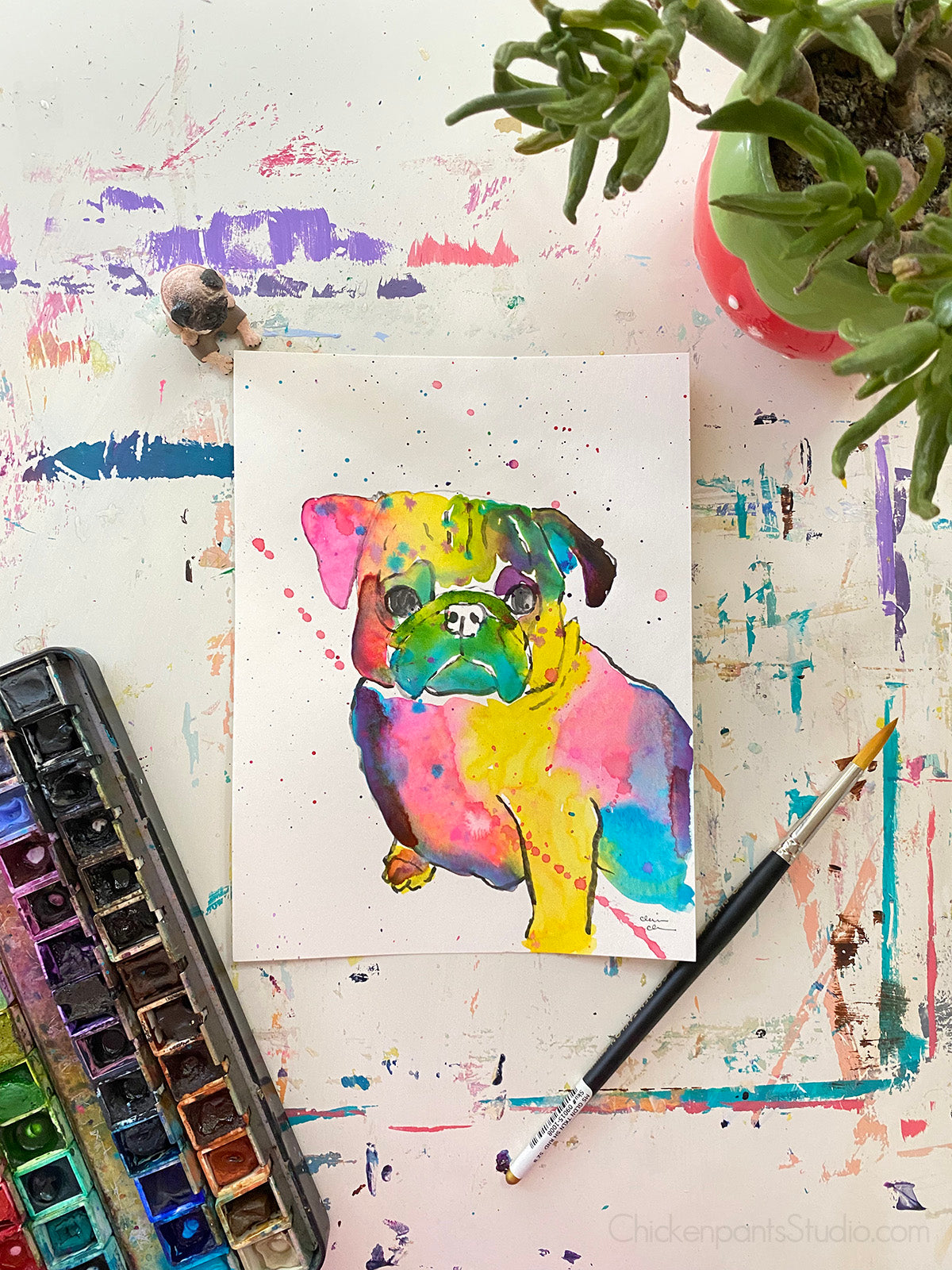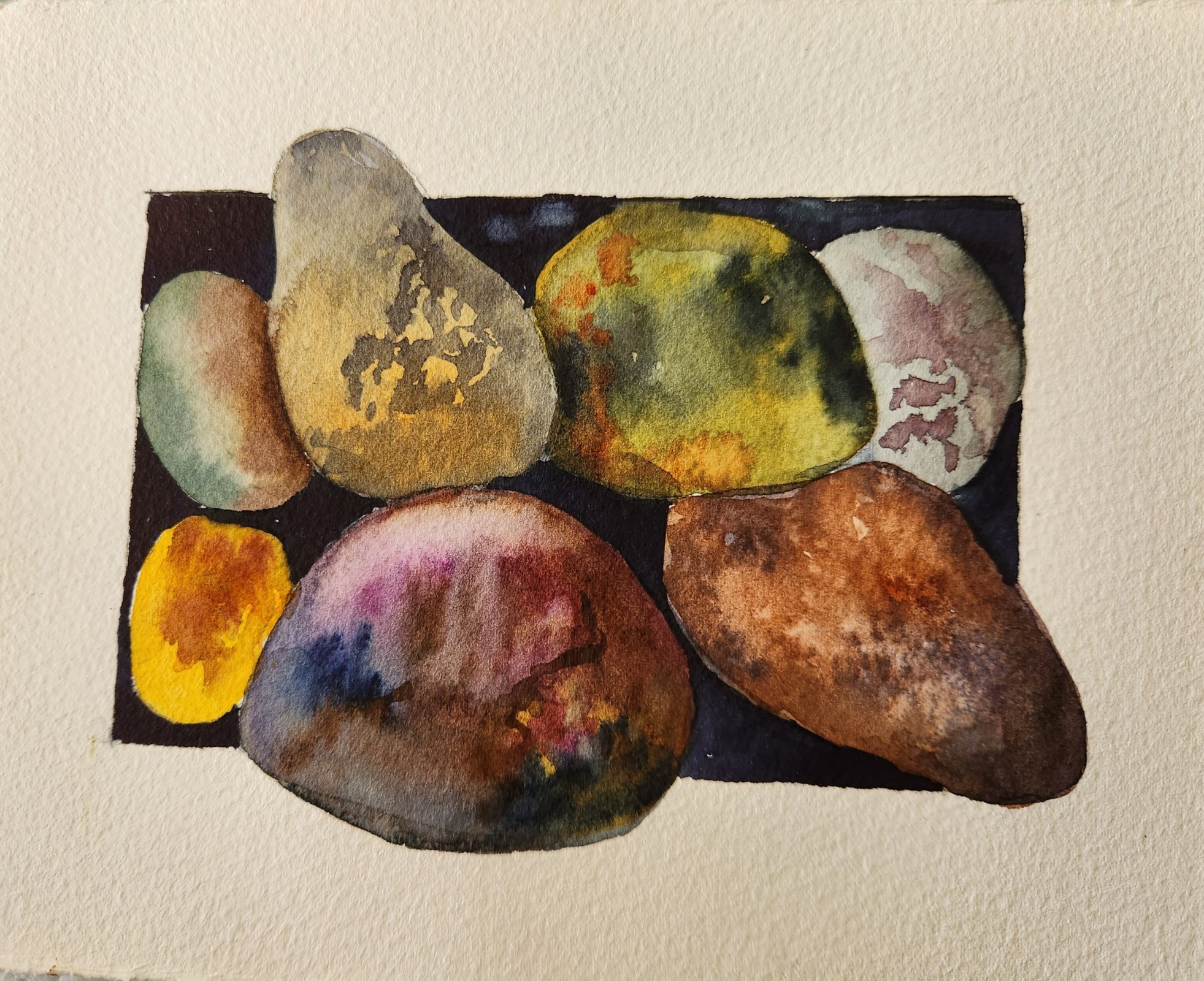Introduction: The Magical World of Watercolor Painting
Watercolor painting is a captivating art form that allows artists to express their creativity using water-based pigments and a few essential tools. Whether you’re a beginner or an experienced artist, learning watercolor painting can be a rewarding and fulfilling journey. In this guide, we’ll explore the fundamentals of watercolor painting, from understanding the basic techniques to creating stunning works of art that showcase your unique style and vision.
Getting Started: Essential Tools and Materials
Before you begin your watercolor painting journey, it’s important to gather the necessary tools and materials. Start with a set of high-quality watercolor paints in a variety of colors, along with brushes of different sizes and shapes to achieve different effects. You’ll also need watercolor paper or a watercolor sketchbook, masking tape, a palette for mixing colors, and a container of water for cleaning your brushes.

Understanding Watercolor Techniques: From Wet-on-Dry to Wet-on-Wet
Watercolor painting relies on a variety of techniques to achieve different effects and textures. One of the most basic techniques is wet-on-dry, where wet paint is applied to a dry surface, allowing for crisp lines and details. Conversely, wet-on-wet involves applying wet paint to a wet surface, resulting in softer edges and blending of colors. Other techniques include dry brushing, lifting, and salt or alcohol effects, each offering unique opportunities for artistic expression.
Exploring Color Theory: Mixing and Blending Pigments
Color theory plays a crucial role in watercolor painting, as understanding how colors interact and blend can help you create dynamic and harmonious compositions. Experiment with mixing primary colors to create secondary and tertiary colors, and practice blending colors on your palette and on the paper to achieve smooth transitions and gradients. Pay attention to factors such as color temperature, value, and intensity to add depth and dimension to your paintings.

Developing Your Style: Embracing Experimentation and Exploration
As you continue to practice and refine your watercolor painting skills, don’t be afraid to experiment and explore different techniques, subjects, and styles. Whether you prefer landscapes, portraits, still life, or abstract art, use watercolor painting as a medium for self-expression and creativity. Allow yourself to make mistakes and learn from them, and embrace the journey of discovering your unique artistic voice.
Mastering Composition: Creating Balance and Harmony
Composition is an essential aspect of creating compelling and visually engaging watercolor paintings. Consider elements such as balance, contrast, focal points, and perspective when planning your compositions. Experiment with different compositions and arrangements to create visual interest and convey your intended message or mood.

Capturing Light and Shadow: Adding Depth and Realism
Light and shadow play a crucial role in creating depth, dimension, and realism in watercolor paintings. Pay attention to the direction and quality of light in your reference photos or observation, and use techniques such as layering, glazing, and lifting to capture the subtle interplay of light and shadow. Experiment with creating highlights and shadows to add drama and realism to your paintings.
Finding Inspiration: Drawing from Nature and Everyday Life
Inspiration for your watercolor paintings can be found everywhere, from the beauty of nature to the hustle and bustle of everyday life. Take time to observe the world around you and capture moments that resonate with you emotionally or aesthetically. Whether it’s a breathtaking landscape, a delicate flower, or a candid moment between loved ones, use your observations as inspiration for your artwork.

Seeking Feedback and Guidance: Learning from Others
Don’t hesitate to seek feedback and guidance from other artists, whether through online communities, workshops, or classes. Constructive criticism and advice from fellow artists can help you identify areas for improvement and gain new insights and perspectives. Additionally, studying the works of master watercolor artists can provide valuable inspiration and knowledge to inform your own artistic practice.
Pushing the Boundaries: Experimentation with Mixed Media
While watercolor painting is traditionally done on paper, many artists enjoy pushing the boundaries of the medium by incorporating mixed media elements into their work. Mixed media techniques allow artists to add texture, depth, and visual interest to their paintings, whether through the addition of collage elements, pastels, ink, or even digital enhancements. Experimenting with mixed media can open up new possibilities for creative expression and allow artists to explore unique combinations of materials and techniques.
Sharing Your Artwork: Building Community and Connection
Finally, don’t forget to share your watercolor artwork with others and build connections within the artistic community. Whether through social media platforms, local art exhibitions, or online forums and galleries, sharing your artwork can not only provide valuable feedback and encouragement but also inspire and uplift others. By sharing your passion for watercolor painting with others, you can contribute to a vibrant and supportive artistic community and continue to grow and evolve as an artist.

Exploring Different Subjects: From Landscapes to Portraits
Watercolor painting is incredibly versatile, allowing artists to explore a wide range of subjects. Landscapes are a popular choice among watercolor artists, with their sweeping vistas and rich colors providing endless inspiration. Whether you’re painting a majestic mountain range, a tranquil seaside scene, or a quaint countryside village, watercolor techniques can capture the beauty and essence of the natural world.
Portraiture is another captivating subject for watercolor artists, offering the opportunity to capture the personality and emotion of the human face. From detailed portraits that capture every nuance and expression to loose, expressive sketches that convey a sense of movement and vitality, watercolor painting lends itself to a variety of portrait styles. Experiment with different approaches to capturing likeness, gesture, and mood to create portraits that resonate with viewers on a deep and emotional level.
Conclusion: Embrace the Journey of Watercolor Painting
In conclusion, watercolor painting offers a rich and rewarding artistic experience that allows artists to unleash their creativity and express their unique vision. By mastering essential techniques, understanding color theory, exploring different styles and subjects, and seeking inspiration and guidance from others, you can embark on a fulfilling journey of self-discovery and artistic growth. So pick up your brush and palette, and let the magical world of watercolor painting unfold before you.







